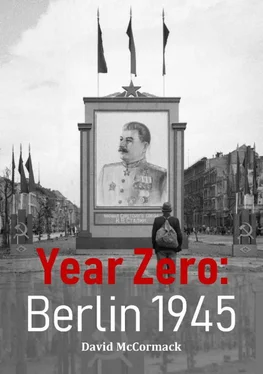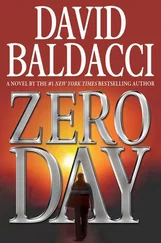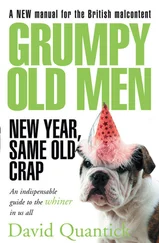True to his word, Rogoff produced a police identification card for Stella. He met her by appointment on a busy street, then disappeared. Rogoff’s sensitive radar told him that there was something not quite right about this blonde beauty. With new papers, Stella could now live openly and without fear. That spring, she met the dashing Rolf Isaaksohn whilst standing in line at a delicatessen on Olivaer Platz. His cousin Dorothy later recalled the charismatic young man who entranced Stella, ‘He had such presence. His bearing was so secure. And when you’re so very handsome, you can get away with a lot’. In a sense, this magnetic figure was a male version of Stella. As such, they were instantly drawn together. Within weeks, they set up home together in a shared three-room apartment on Lietzenburger Strasse.
Stella’s luck ran out on 2 July 1943. She was sitting in the Café Bollenmuller on Mittelstrasse at lunchtime when Inge Lustig (a former acquaintance) entered, waved nervously, and exited hurriedly. Seconds later, Gestapo men made a beeline for Stella. Escape was impossible, she was roughly handled, and bundled off for interrogation. The woman who denounced her was one of a new breed of Nazi-informers, a Jew who actively hunted down other Jews for the Gestapo.
Following her capture, Stella was kept in solitary confinement. Her only contact was with her interrogators who questioned her at irregular intervals about her suspicious paperwork which bore all the hallmarks of a Rogoff forgery. Unwilling to accept that Stella didn’t know Rogoff’s current whereabouts, her inquisitors resorted to crude torture methods in order to extract information. Stella described her treatment during her second trial in 1957:
They kicked both of my shins to the breaking point and kept beating the same spot on my spine. I was bleeding from the mouth, ears, and nose and couldn’t eat for days. They wanted to throttle me. Three times they took the safety off a pistol and put it against my temple. Totally shattered, I lay unconscious on the floor. Then they kicked me with their boots and I gave up on my life.
The harsh treatment meted out to Stella effectively destroyed her image of herself as a deified object of sexual desire. Since adolescence, she had used her looks to gain power over those who lusted after her. Her Gestapo interrogators cared little about her looks, their focus was the apprehension of the forger Rogoff.
When it became clear that their rough handling of Stella was not achieving the desired results, the Gestapo transferred her to the women’s prison located in the Tempelhof district. The prison was in reality no more than a collection of run-down barracks. Complaining of severe toothache (most probably a result of her beatings), Stella was taken to the police dental surgery on Scharnhorststrasse. The place was so lightly guarded, that she was able to slip out unnoticed. Even after her absence had been noticed, there were too few police personnel on duty to mount a pursuit. Stella remained at large for less than twelve hours before she was rearrested by the Gestapo. Once returned to custody, the questions and the beatings began again. This time the Gestapo wanted to know where they could find a passport forger named Mikki Hellman. Stella knew Hellman from their time together at the Feige – Strassburger school. Consequently, Hellman also knew Samson Schonhaus (a.k.a. Guenther Rogoff). The Gestapo forced Stella to write a card to Hellman, inviting him to a rendezvous. Hellman’s subsequent arrest marked Stella’s first operation as a ‘catcher’.
On 23 August 1943, the Gestapo prison was bombed-out during the opening phase of Bomber Harris’ ‘Battle of Berlin’. During the confusion, Stella was once more able to escape. Wandering alone in Berlin, Stella came to a decision:
I had phosphorous poisoning, contusions all over my body, my legs were green and blue, and my shoes fell off my feet like ashes… My emotions and my love of my parents caused me to decide to share their lot. I walked for three and a half hours after the raid ended and surrendered at Grosse Hamburger Strasse… I could have run, but I didn’t.
The interrogations began again, her inquisitor had several Rogoff forgeries already prepared as evidence. Stella finally admitted that Rogoff had produced false papers for her. The prison commandant Walter Dobberke suggested to Stella that she could be an asset in tracking down the elusive forger. Stella bluntly asked Dobberke, ‘What advantages will I have?’. The advantages were indeed numerous, ‘catchers’ like Inge Lustig were able to live like gentiles. There was no requirement to wear the star, no confinement to camp, food and pay was more than adequate, and government issue identity papers certified their immunity. Moreover, their names were taken off deportation lists. Further incentives came in the form of additional pay and immunity for family members if the ‘catcher’ proved effective.
Dobberke was impressed by Stella. She had escaped from Gestapo custody several times. Her appearance and demeanour suggested that she could be a valuable Gestapo asset. Not wishing to pass up this opportunity, he cut a deal. Stella, and her parents would be exempted from deportation to Auschwitz if she helped to catch the elusive forger. Later, Stella recounted how the deal was struck:
Dobberke announced that, starting the following day, I would be in the eternal service of the Gestapo. He said that he had already spoken to Sturmbannfuhrer Stock about it… and that written approval would follow.
After a slow start, Stella developed into a formidable operator, her remarkable memory for names, faces and places making her a prized asset. Her boyfriend Rolf Isaaksohn was arrested and ‘turned’ in October 1943. Soon, they were teamed-up as the ‘beautiful couple’ who hunted down Berlin’s underground Jews at some of their regular hang-outs. One such hang-out was the Staatsoper on the Unter den Linden. On 16 December 1943, Isaaksohn recognised two underground Jews, Abraham Zajdman, and his son Moritz. As the ‘beautiful couple’ closed in, Moritz made a run for it. Stella shouted out, ‘Keep him, Jew!’. Passers by apprehended Moritz in the street, dragging him back to where the Gestapo were already waiting. As a result of her actions, Stella soon gained a notorious reputation for ruthlessness and cruelty amongst Berlin’s Jewish U-Boat population. A reputation which was well deserved.
In February 1944, Stella was informed that her parents could no longer be exempted from transportation. She argued their case vociferously, but to no avail. It did however come as some relief when she learned that they were not bound for Auschwitz, but instead for the slightly more benign surroundings of Theresienstadt. Having rationalised the situation, she made the decision to go on working. Her own survival depended entirely upon her success as a ‘catcher’. During the spring and summer of 1944, the ‘beautiful couple’ seemed to materialise everywhere. The Swiss Embassy on Herman Goring Strasse, and Westend eateries including the Dobrin, Kranzler, Leon, Wien, Uhlandeck and the Teschendorf became part of their regular beat. Occasionally, Stella worked alone. Her modus operandi on these operations was to attend the funerals of mixed marriage couples as the death of the Aryan spouse automatically cancelled any immunity the Jewish partner enjoyed.
However, time was running out, as no matter how artfully the Propaganda Ministry put a spin on the latest news from the battlefronts, the truth was that the Allies were winning. The German Reich was shrinking. The deteriorating war situation coincided with a deterioration in Stella’s relationship with her handsome partner-in-crime. She questioned his sexuality (Rolf was bisexual). There were fights, slanging matches and fierce recriminations. Sensing that he was about to lose control over his most prized asset, Dobberke insisted that the pair marry. Reluctantly, they tied-the-knot in a simple ceremony on 29 October 1944. Although he had managed to keep control of Stella, Dobberke would soon have reason enough to doubt her loyalty.
Читать дальше












